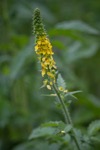Notice (8): Undefined index: geoplugin_countryCode [APP/Controller/AppController.php, line 94]Code Context$Country_code = '';if($ip_data && $ip_data['geoplugin_countryCode'] != null) {$Country_code = $ip_data['geoplugin_countryCode'];$client = null $forward = null $remote = '216.73.216.189' $ip = '216.73.216.189' $ch = unknown $ip_data_in = '{ "geoplugin_status":429, "geoplugin_message": "Blacklisted due to sending too many requests to geoplugin.net. Consider whitelisting your IP or domain", "geoplugin_url": "https://www.geoplugin.com/premium/" } ' $ip_data = [ 'geoplugin_status' => '429', 'geoplugin_message' => 'Blacklisted due to sending too many requests to geoplugin.net. Consider whitelisting your IP or domain', 'geoplugin_url' => 'https://www.geoplugin.com/premium/' ] $Country_code = ''App\Controller\AppController::initialize() - APP/Controller/AppController.php, line 94 App\Controller\ProductsController::initialize() - APP/Controller/ProductsController.php, line 31 Cake\Controller\Controller::__construct() - CORE/src/Controller/Controller.php, line 273 ReflectionClass::newInstance() - [internal], line ?? Cake\Http\ControllerFactory::create() - CORE/src/Http/ControllerFactory.php, line 47 Cake\Http\ActionDispatcher::dispatch() - CORE/src/Http/ActionDispatcher.php, line 91 Cake\Http\BaseApplication::__invoke() - CORE/src/Http/BaseApplication.php, line 235 Cake\Http\Runner::__invoke() - CORE/src/Http/Runner.php, line 65 Cake\Http\Runner::__invoke() - CORE/src/Http/Runner.php, line 65 Cake\Http\Middleware\CsrfProtectionMiddleware::__invoke() - CORE/src/Http/Middleware/CsrfProtectionMiddleware.php, line 104 Cake\Http\Runner::__invoke() - CORE/src/Http/Runner.php, line 65 Cake\Http\Runner::run() - CORE/src/Http/Runner.php, line 51 Cake\Routing\Middleware\RoutingMiddleware::__invoke() - CORE/src/Routing/Middleware/RoutingMiddleware.php, line 168 Cake\Http\Runner::__invoke() - CORE/src/Http/Runner.php, line 65 Cake\Routing\Middleware\AssetMiddleware::__invoke() - CORE/src/Routing/Middleware/AssetMiddleware.php, line 88 Cake\Http\Runner::__invoke() - CORE/src/Http/Runner.php, line 65 Cake\Error\Middleware\ErrorHandlerMiddleware::__invoke() - CORE/src/Error/Middleware/ErrorHandlerMiddleware.php, line 96
| Scientific: | Agrimonia eupatoria |
|---|---|
| Other: | Agrimony |
| Family: | Rosaceae |
Agrimony was traditionally used for gastrointestinal inflammation, ulcers, diarrhea, mucousy colitis and in particular for grumbling (chronic or subacute) appendicitis. Unlike powerful astringent herbs, like oak and witch hazel, agrimony is gentle and suitable for childrens diarrhea and the elderly. It contains ellagitannins (agrimoniin) that impart its astringent action. Various flavonoids (apigenin, quercetin, luteolin) contribute to its antispasmodic and anti-inflammatory effects. Agrimony tastes bitter, and thus tonifys the digestive tract and supports the liver function. It has a reputation for being able to cure jaundice and other liver issues.
It acts as a vulnerary to hasten wound healing and can be used both internally and topically. As a gargle, it aids ulcerations and infection in the mouth and throat including tonsilitis and aphthous ulcers.
Agrimony acts on the urinary tract in several ways. Although it does have some mild antiseptic properties, its diuretic effect helps flush out urinary tract infections (UTIs) and gravel. It relaxes smooth muscles in the urinary tract to relieve renal colic and pain associated with the passing of kidney stones. The astringency also helps decrease inflammation and bleeding in the urinary tract, and even improve tone to help enuresis (bed wetting).
Agrimony is primarily used with inflammatory and infectious conditions affecting the digestive and urinary tract:
Gastrointestinal
• inflammation and infections of the GI tract
• diarrhea
• irritable bowel syndrome (IBS)
• colitis
• gastric ulcer
• gastritis
• early stage appendicitis
Hepatobiliary
• hepatitis B virus (HBV)
Urinary
• bladder and kidney infections that produce foul smelling, turbid urine with mucous
• urinary incontinence
• renal colic
• Antimicrobial
• Bitter
• Astringent
• Diuretic
• Genitourinary Tonic
• Gastroprotective
• Tannins
• Coumarins & Volatile Oils
• Bitter Compounds
• Flavonoids
• Tincture (1:5 in 45% EtOH): 1-4 ml tid
• Liquid extract (1:1 in 25% EtOH): 1-3 ml tid
• Decoction (dried herb): 2-4 g tid
Generally considered safe when used as indicated.
• No specific interactions with this herb is known.
• Tannins may reduce the absorption of some drugs.
Barnes J, Anderson LA, Phillipson JD. Herbal Medicines, 3rd ed. London: Pharmaceutical Press, 2007.
Bone K. Principles and Practice of Phytotherapy. Edinburgh: Churchill Livingstone, 2000.
Bone K. A Clinical Guide to Blending Liquid Herbs: Herbal Formulations for the Individual Patient. St Louis, MO: Churchill Livingstone, 2003.
Brinker F. The Toxicology of Botanical Medicines, 3rd ed. Sandy, Oregon: Eclectic Medical Publications, 2000.
Felter HW, Lloyd JU. King's American Dispensatory. 1898. http://www.ibiblio.org/herbmed/eclectic/kings/main.html. Accessed: August 19, 2006.
Hoffman D. Medical Herbalism. Rochester, Vermont: Healing Arts Press, 2003.
Weiss RF. Herbal Medicine. Beaconsfield, England: Beaconsfield Publishers Ltd, 1988.
Williamson EM, ed. Major Herbs of Ayurveda. Edinburgh: Churchill Livingstone, 2002
Disclaimer: This content is subject to change. The information is intended to inform and educate; it does not replace the medical evaluation, advice, diagnosis or treatment by a healthcare professional. www.nhpassist.com © 2014 NDAssist Inc. and/or its affiliates. All rights reserved.

|
Agrimony
SummaryAgrimony was traditionally used for gastrointestinal inflammation, ulcers, diarrhea, mucousy colitis and in particular for grumbling (chronic or subacute) appendicitis. Unlike powerful astringent herbs, like oak and witch hazel, agrimony is gentle and suitable for childrens diarrhea and the elderly. It contains ellagitannins (agrimoniin) that impart its astringent action. Various flavonoids (apigenin, quercetin, luteolin) contribute to its antispasmodic and anti-inflammatory effects. Agrimony tastes bitter, and thus tonifys the digestive tract and supports the liver function. It has a reputation for being able to cure jaundice and other liver issues. IndicationsSign in requiredActionsSign in requiredConstituentsSign in requiredPosologySign in requiredSafetySign in requiredInteractionsSign in requiredReferencesSign in required |
|---|